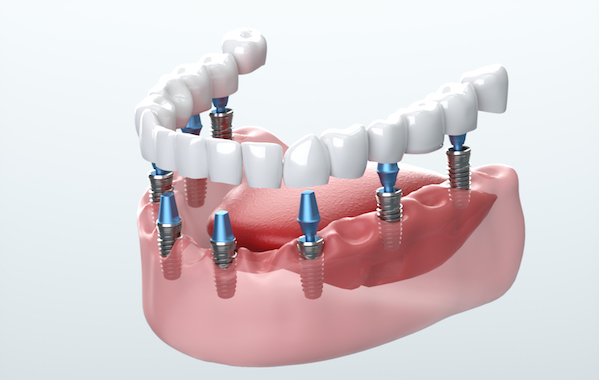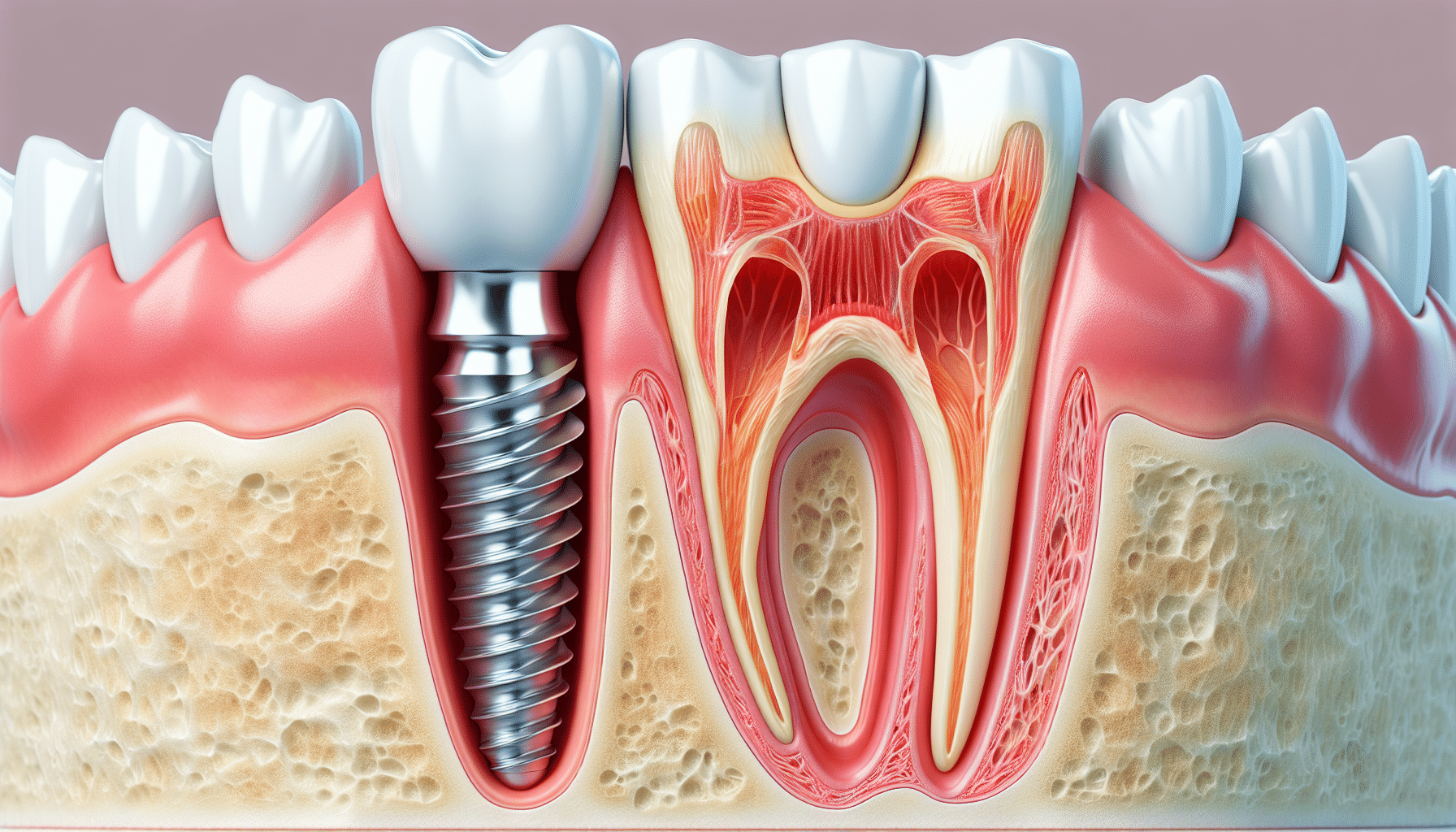Dental Teeth Implants Norton Shores MI - Dental Implants: Surgery, Advantages, Risks, & Insurance
The journey toward dental implants begins with an intensive assessment of the jawbone's condition. When there's inadequate bone density to support an implant, bone grafting turns into my blog a crucial process to recreate a stable basis. Understanding how much bone grafting is required for dental implants greatly influences the remedy plan, timeline, reference and total success rate.
The amount of bone grafting required is dependent upon a quantity of factors, including the extent of bone loss, the implant's dimension, and the specific location inside the mouth. In circumstances of significant bone loss as a outcome of periodontal diseases, trauma, or prolonged tooth loss, extra extensive grafting may be essential. Conversely, if the bone loss is minimal, a smaller graft may suffice.
Affordable Dental Implants Near Me Wyoming MI - How Much Do Dental Implants Cost? A Price Breakdown
The evaluation process typically entails imaging research corresponding to X-rays or 3D scans, permitting the dental professional to visualize the bone structure (Dental Implant Muskegon MI). These images assist in figuring out the quality and amount of present bone. If the bone is deemed insufficient, the dentist will then define the appropriate grafting procedures
Grafting can be sourced from varied areas. Autografts, which involve harvesting bone from the affected person's own physique, are sometimes deemed the gold standard. These provide glorious integration with the existing bone however come with the drawback of extra surgery. Other options embody allografts, which use donor bone, and synthetic materials designed to imitate natural bone. Each option has its personal implications on healing and success charges.
After determining the required amount of bone grafting, the dental skilled will create a tailored plan for the patient. This plan might include the timing of bone grafting in relation to the implant placement. In some cases, a graft could be carried out simultaneously with the implant surgery. Alternatively, in additional complicated eventualities, a separate healing period is indicated.
Healing timelines range based mostly on the individual's health, the extent of grafting, and the kind of graft used. Generally, the therapeutic of a bone graft takes a number of months earlier than an implant can be positioned. During this time, bone regeneration happens, leading to a steady base for the implant.
Dental Implants Walker MI - Dental Implants - Oral and Maxillofacial Surgery
Patients usually surprise in regards to the risks related to bone grafting. While problems similar to infection or graft failure are possible, these events are relatively uncommon. Adhering to post-operative care directions and attending follow-up appointments reduce risks and promote healing.
Once the bone has adequately healed, the dentist assesses the graft's success by evaluating the bone density and stability. If everything seems favorable, the following steps towards putting the dental implant can commence. The success of this subsequent step largely hinges on the standard of the bone graft and its integration with the encompassing bone.
Cost considerations play an essential position in the decision-making process. The expense of bone grafting varies based on materials used, the complexity of the case, and geographic location. It is essential for patients to discuss finances upfront to avoid surprising payments later within the remedy.
Dental Implants Near Me Wyoming MI - Dental Implants services
Also, patients ought to have realistic expectations concerning the timeline and outcomes. Many factors can affect how a lot bone grafting is needed and its general effectiveness. A collaborative approach involving the patient and the dental staff not only ensures readability but additionally enhances the chances of a profitable consequence.

Maintaining good oral hygiene and common dental visits following the process is significant. These practices can prevent issues and make positive that both the graft and the implant stay stable over time. The ongoing relationship with a dental professional is essential, especially in the months following the procedures.
In conclusion, understanding how a lot bone grafting is needed for dental implants encompasses a multi-faceted strategy that considers bone quality, grafting sorts, healing time, and general affected person health. The balance between attaining the desired aesthetic and useful outcomes whereas minimizing risks and issues is at the heart of dental implant procedures. The journey may be extensive, but a well-planned method maximizes the chances for a successful, long-lasting lead to restorative dental work.
- Determining the quantity of bone grafting required for dental implants typically hinges on the preliminary bone density and volume of the patient's jawbone.
- Each patient's case is exclusive; components such as previous extractions, periodontal disease, or trauma can affect the necessity for grafting.
- A 3D imaging scan is typically conducted to evaluate the precise dimensions of the out there bone and inform the grafting technique.
- The type of dental implant placement—immediate or delayed—may dictate the amount of bone grafting needed for stability and integration.
- Different forms of graft materials, such as autografts, allografts, or synthetic choices, can influence how a lot grafting materials is needed.
- Assessing the patient's overall health, age, and way of life habits can affect the therapeutic course of, influencing graft quantity requirements.
- The depth and placement of the implant can necessitate varying amounts of graft material to safe optimum outcomes.
- Successful integration of the dental implant typically depends on adequate bone density, resulting in a tailor-made grafting method for every particular person.
- Consultation with an oral surgeon will present a clearer estimate of the bone grafting wanted primarily based on complete evaluations and imaging outcomes.
- Post-grafting therapeutic time varies; thus, a cautious analysis is crucial to determine the ultimate quantity of grafting required for profitable implantation.undefinedHow a lot bone grafting is needed for dental implants?
Dental Implants Near Me Grand Haven MI - Dental Implants - an overview
What is bone grafting and why is it necessary for dental implants?undefinedBone grafting is a surgical process that adds bone or bone-like materials to the jawbone. It is necessary for dental implants when the present bone is insufficient to help the implant, ensuring stability and long-term success.
How do I know if I want a bone graft for dental implants?undefinedYour dentist or oral surgeon will consider your jawbone via x-rays or 3D imaging to determine its density and quantity. If they discover that you lack sufficient bone, they may recommend a bone graft earlier than continuing with the dental implant.
Dental Implants And Dentures Walker MI - Multiple Tooth Dental Implants
What factors influence the amount of bone grafting needed?undefinedFactors embrace the dimensions and site of the implant website, the health and density of present bone, and particular person therapeutic capability (Implants Dental Implants Holland MI). These parts help the dentist determine the suitable quantity of graft materials needed
Are there several types of bone grafts used for dental implants?undefinedYes, there are a quantity of sorts, together with autografts (from your personal body), allografts (from a donor), xenografts (from animals), and synthetic graft materials. Each kind has distinctive benefits and can be selected primarily based on particular person patient needs.
Dental Implants Norton Shores MI - Dental Implants - an overview
How long does the bone grafting process take?undefinedThe duration varies based mostly on the complexity of the grafting course of and the extent of the area treated. Generally, a bone grafting process can take wherever from 30 minutes to some hours, relying on the particular circumstances.
What is the recovery time after a bone graft for implants?undefinedRecovery times can differ, but typically, initial healing might take a number of weeks, while complete integration of the graft with the bone can take several months. Your dentist will present a personalised timeline primarily based in your scenario.

Will I experience pain after the bone grafting procedure?undefinedSome discomfort is common after a bone graft, however it's usually manageable with prescribed pain treatment. Most sufferers report that pain diminishes significantly within a few days.
Dental Teeth Implants Grandville MI - Dental Implants: A 5-step plan to restoring your teeth
How does bone grafting have an effect on the overall dental implant timeline?undefinedBone grafting may extend the general timeline for receiving dental implants, because it requires a healing period earlier than implants could be placed. This can add several months to the method however is important for a successful implant placement.

Are there risks associated with bone grafting for dental implants?undefinedLike any surgical procedure, bone grafting carries some risks, such as infection, graft failure, or issues associated to anesthesia. However, when carried out by an experienced professional, these risks are generally low.
Can I actually have dental implants positioned instantly after a bone graft?undefinedIn many instances, dental implants cannot be placed instantly after a bone graft because of the need for the graft to integrate into the existing bone. However, some strategies, like quick loading, might allow for this under particular conditions. Your provider will advise you on the best option based mostly on your circumstances.